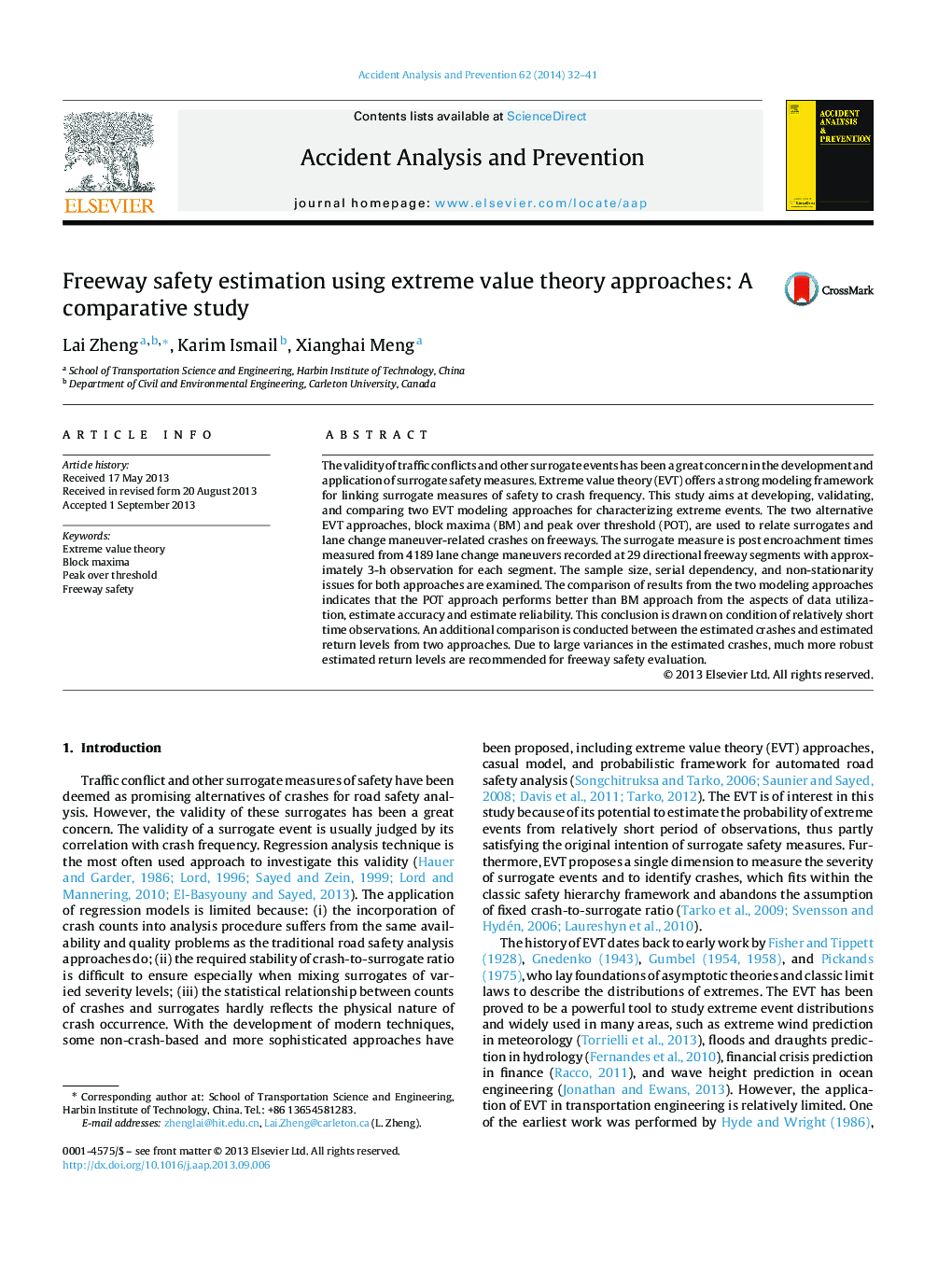| Article ID | Journal | Published Year | Pages | File Type |
|---|---|---|---|---|
| 6966035 | Accident Analysis & Prevention | 2014 | 10 Pages |
Abstract
The validity of traffic conflicts and other surrogate events has been a great concern in the development and application of surrogate safety measures. Extreme value theory (EVT) offers a strong modeling framework for linking surrogate measures of safety to crash frequency. This study aims at developing, validating, and comparing two EVT modeling approaches for characterizing extreme events. The two alternative EVT approaches, block maxima (BM) and peak over threshold (POT), are used to relate surrogates and lane change maneuver-related crashes on freeways. The surrogate measure is post encroachment times measured from 4189 lane change maneuvers recorded at 29 directional freeway segments with approximately 3-h observation for each segment. The sample size, serial dependency, and non-stationarity issues for both approaches are examined. The comparison of results from the two modeling approaches indicates that the POT approach performs better than BM approach from the aspects of data utilization, estimate accuracy and estimate reliability. This conclusion is drawn on condition of relatively short time observations. An additional comparison is conducted between the estimated crashes and estimated return levels from two approaches. Due to large variances in the estimated crashes, much more robust estimated return levels are recommended for freeway safety evaluation.
Related Topics
Physical Sciences and Engineering
Chemical Engineering
Chemical Health and Safety
Authors
Lai Zheng, Karim Ismail, Xianghai Meng,
